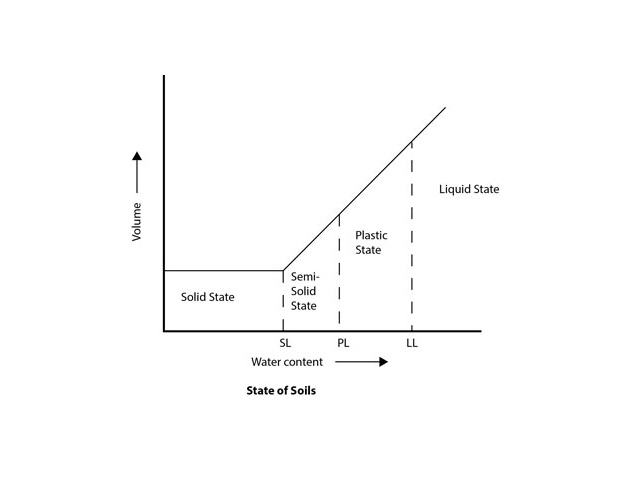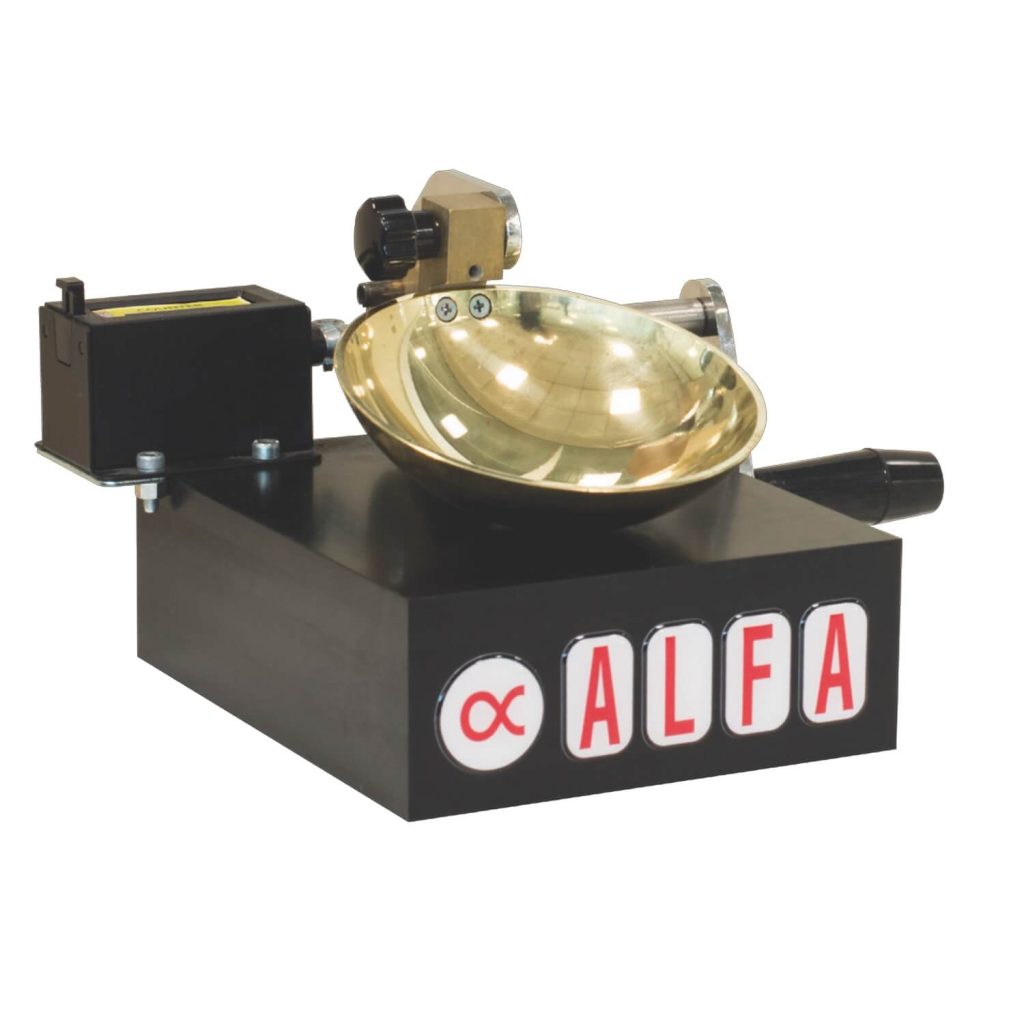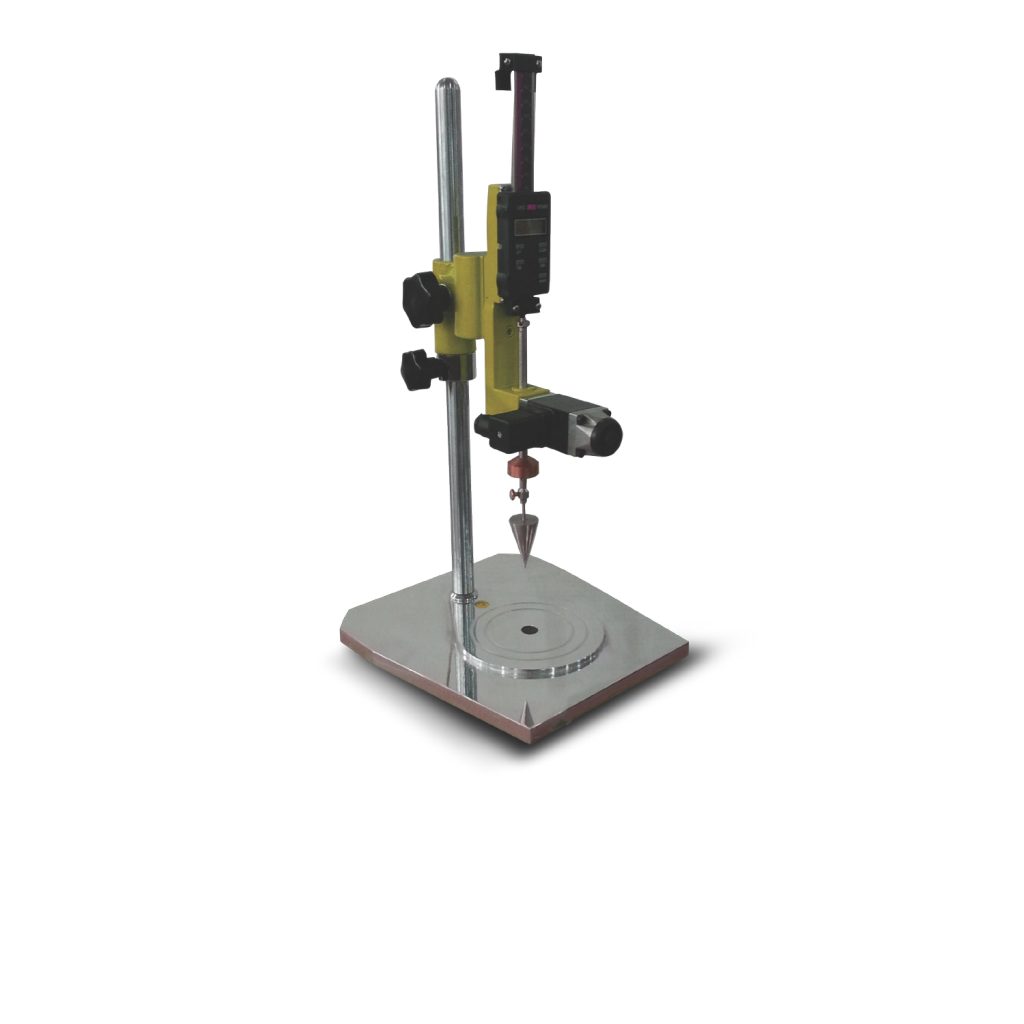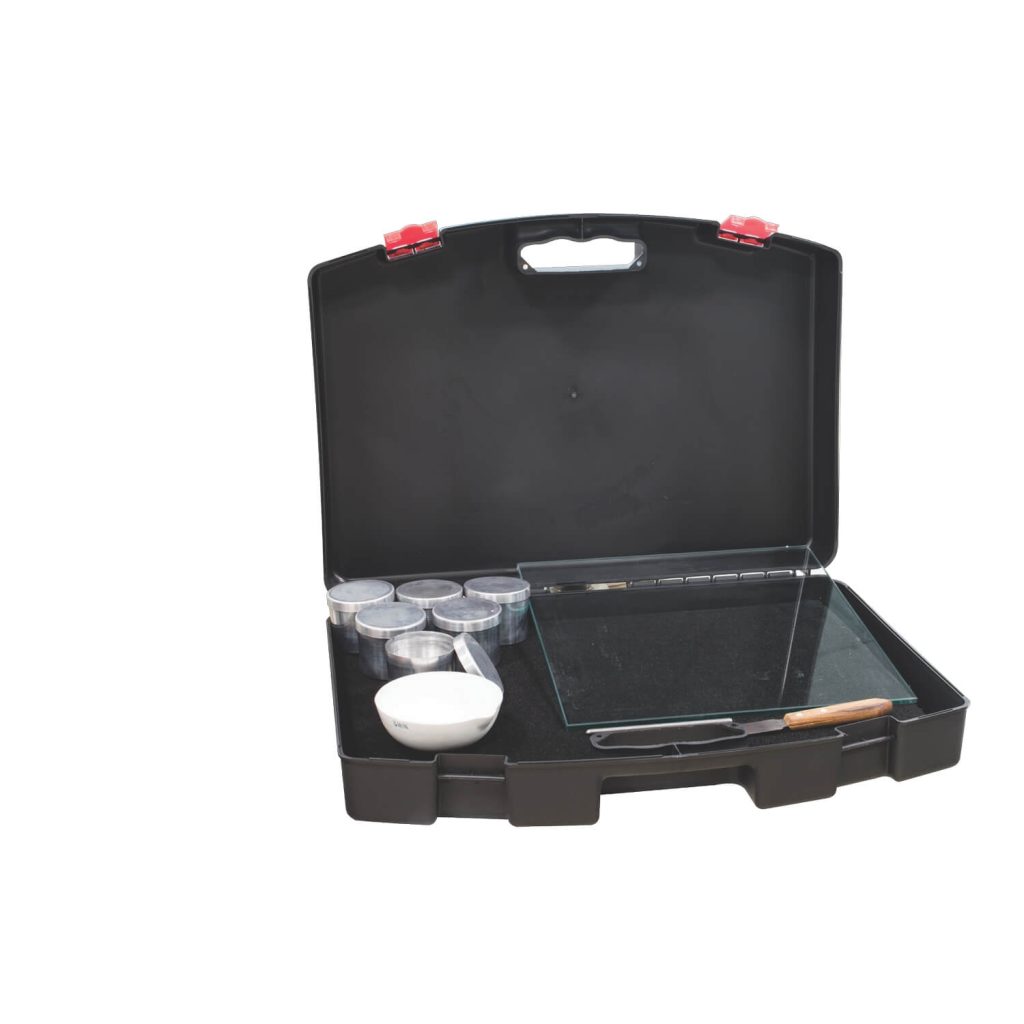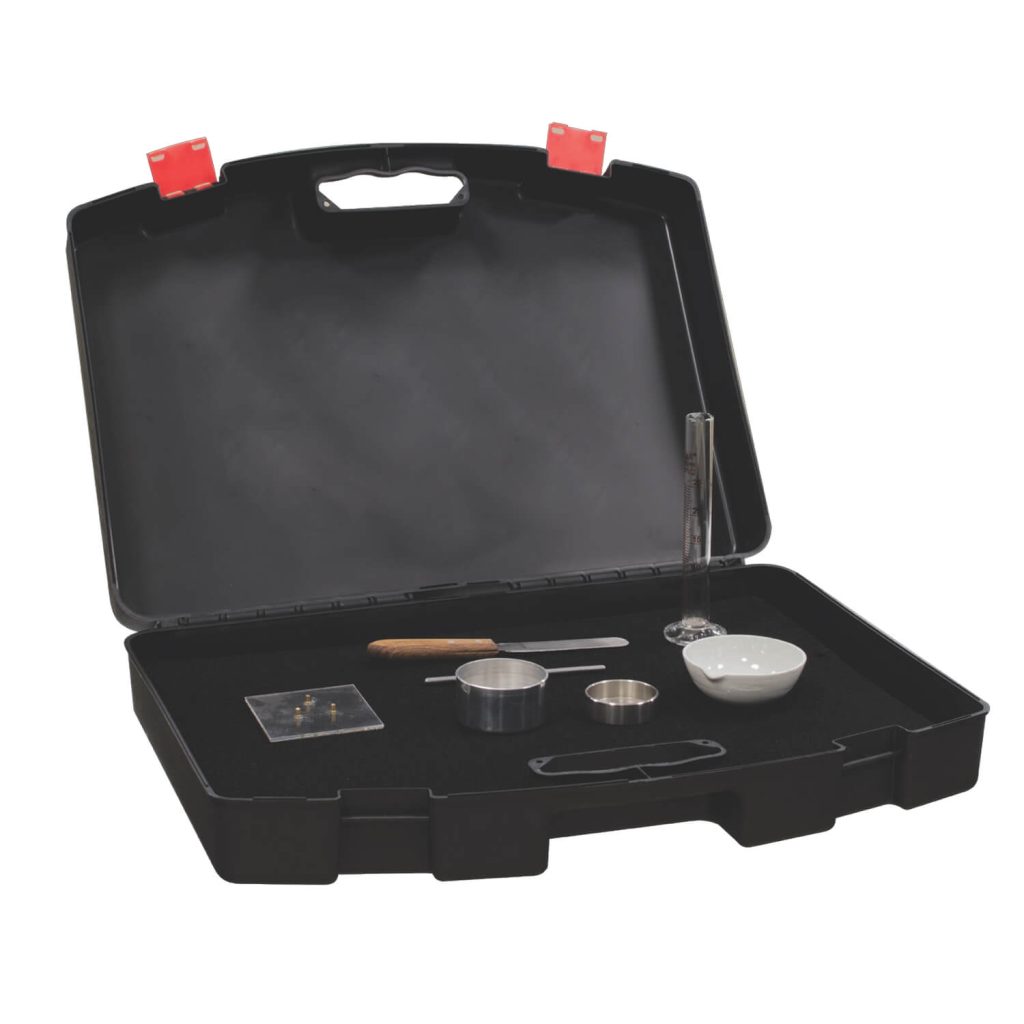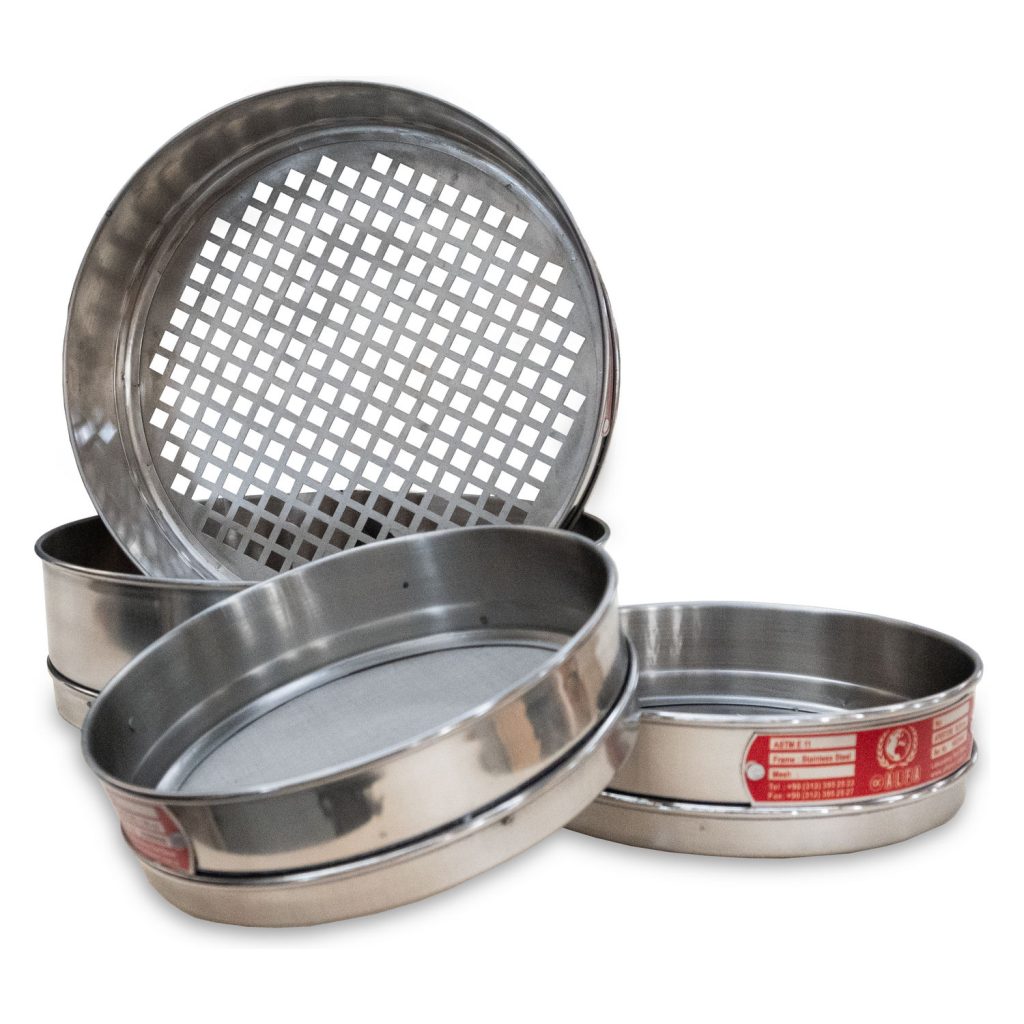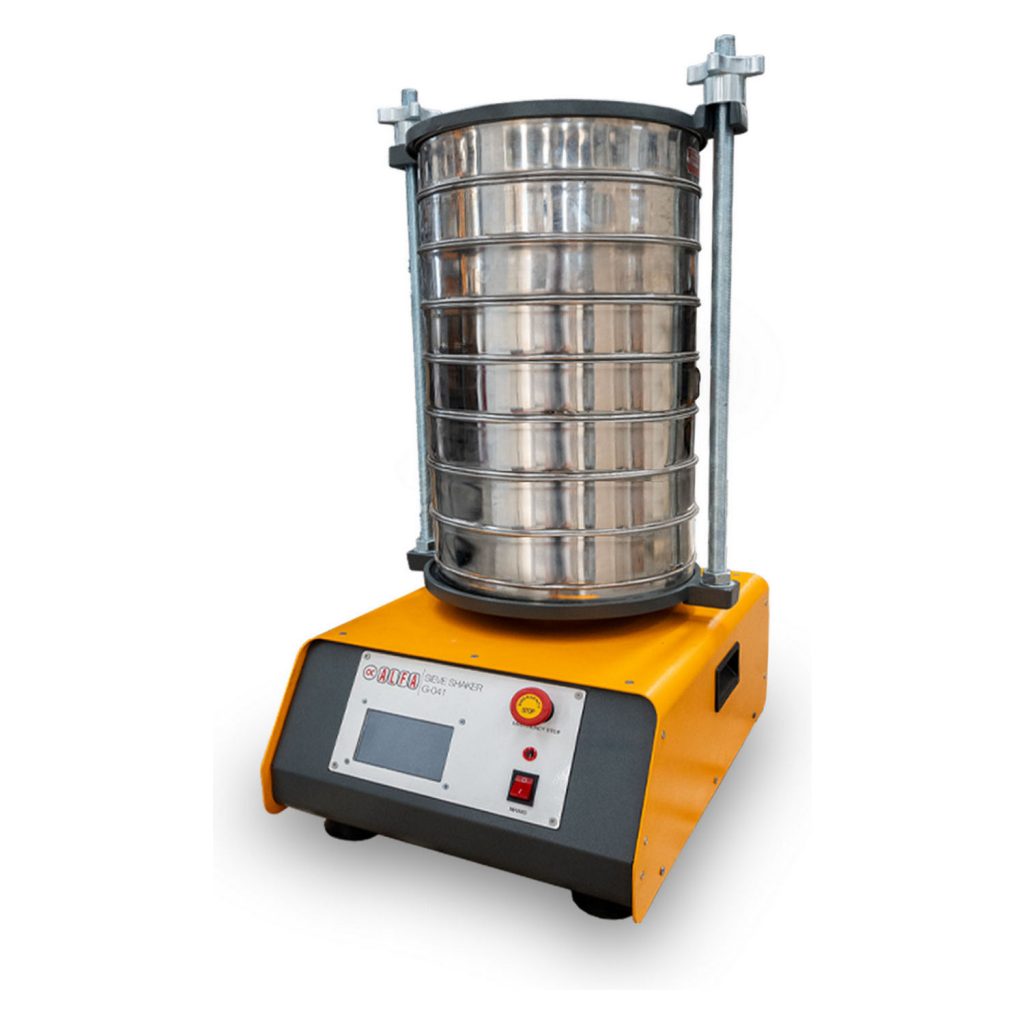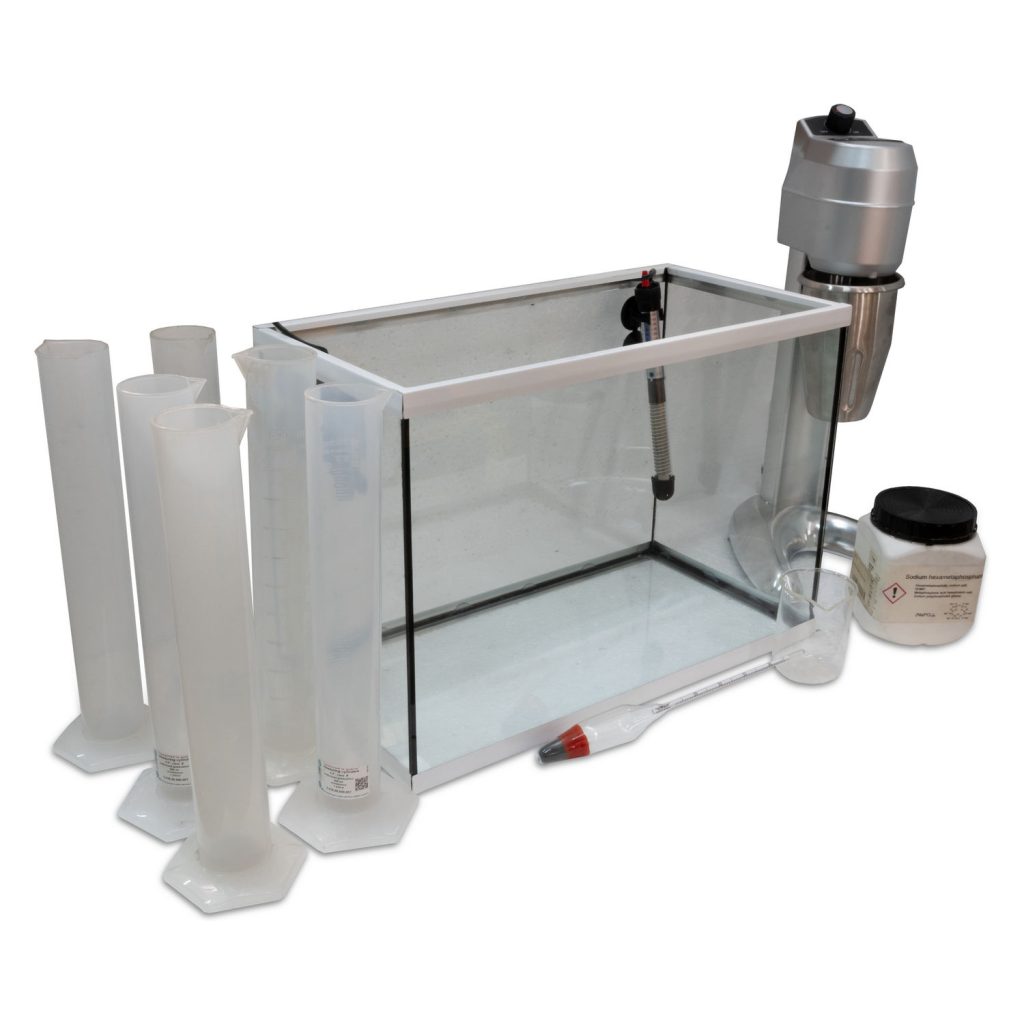The Atterberg limits are a set of three moisture content thresholds:
- Liquid Limit (LL)
- Plastic Limit (PL)
- Shrinkage Limit (SL)
Used to assess the behavior of fine-grained soils, particularly clays, as they transition between solid, plastic, and liquid states. These limits provide vital information for classifying soil, predicting its behavior under various conditions, and determining its suitability for construction.
Atterberg Limits
1. Liquid Limit (LL): The moisture content at which soil changes from a plastic to a liquid state. It indicates the water content at which soil starts to flow, helping to classify its deformation potential. Soils with high LL are typically clay-rich, expansive, and prone to large deformations when wet.
2. Plastic Limit (PL): The moisture content at which soil changes from a plastic to a semi-solid state. This threshold is essential for understanding soil workability and moldability in construction. The difference between LL and PL yields the Plasticity Index (PI), which shows the range over which soil remains plastic.
3. Shrinkage Limit (SL): The moisture content below which further drying does not cause additional shrinkage. This is particularly useful for assessing the shrink-swell potential of clay soils, which can affect foundation stability.
Derived Parameters and Their Applications
The Atterberg limits, along with derived indices, give insights into soil behavior and help in various applications:
– Plasticity Index (PI): Calculated as:
It indicates the range of plasticity. High PI values often mean expansive, clay-rich soils with significant shrink-swell potential, impacting foundation design.
– Liquidity Index (LI): Calculated as:
where w is the natural moisture content.
LI tells us about the soil’s in-situ moisture state. An LI > 1 indicates a soil in a near-liquid state with low shear strength, while an LI < 0 indicates a stiffer, drier state.
– Soil Activity (A): Calculated as:
where CF is the Clay Fraction (% of particles smaller than 0.002 mm).
It differentiates expansive (active) clays from non-expansive (inactive) clays. Highly active clays (A > 1.25) have a high shrink-swell potential and require careful foundation design.
Practical Applications of Atterberg Limits
1. Soil Classification: Atterberg limits are integral to classification systems like the Unified Soil Classification System (USCS) and AASHTO, helping to categorize soils (e.g., CL for low-plasticity clay, MH for high-plasticity silt) and guide construction decisions.
2. Consistency and Shear Strength: Atterberg limits reveal soil’s consistency and potential shear strength under various moisture conditions. Soils with high LL and PI generally exhibit lower shear strength when wet, making them prone to slope stability issues.
3. Sensitivity to Moisture Changes: High LL and PI soils are more sensitive to moisture variations, leading to potential seasonal movement and stability issues in foundations. This sensitivity is crucial in areas with variable groundwater levels.
4. Compressibility and Settlement Potential: Soils with high PI tend to be more compressible, meaning they undergo significant settlement under load. Low PI soils are less compressible and more stable, making them preferable for foundations.
5. Permeability Estimation: Soils with high plasticity (high LL and PI) usually have low permeability, which is beneficial for containment structures but may require liners in embankments or dams.
6. Swelling Potential: The PI also indicates swelling potential; PI > 20 usually denotes a high-swelling soil that could pose risks to foundations, requiring stabilization or moisture control.
7. Liquefaction Potential: Soils with low PI (non-plastic silts and sands) are more susceptible to liquefaction during seismic events. Identifying these soils is essential in earthquake-prone areas, where they may need compaction or other treatments.
Summary
Atterberg limits are fundamental to understanding soil properties and behavior. They help classify soil types, predict settlement and shear strength, assess shrink-swell and liquefaction potential, and estimate permeability. Together, these parameters enable geotechnical engineers to make informed choices in design and stabilization, ensuring safe and durable construction.

